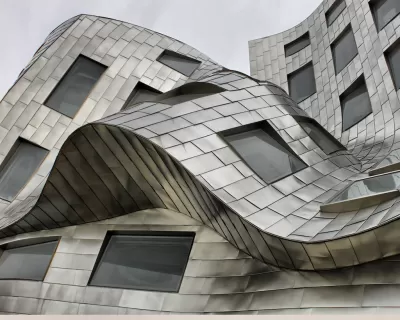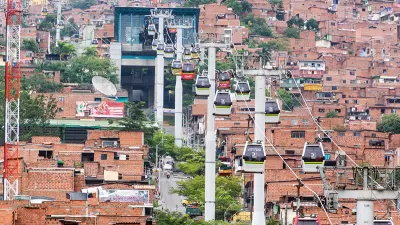Emily Badger examines the intersection of neuroscience and architecture, an emerging area of study that promises to produce environments that support and enhance our brain function.

Architects have long tried to divine how the spaces they design will be experienced by their users. Now, thanks in part to the work of the 10-year-old Academy of Neuroscience for Architecture, an emerging field of study is seeking to find scientific proof of the effects of the built environment on the human brain and nervous system.
Architects and scientists are just beginning to imagine the possibilities of such research, writes Badger. "If architects understood both fields, they might be able, in designing hospitals, schools, and homes for people with all manner of disabilities, to create places that would support the development of premature babies, the treatment of children with autism, the fostering of learning abilities of students."
"We are now really beginning to understand better how to measure the responses to the built environment," says Eduardo Macagno, professor of biological sciences at the University of California, San Diego, "without relying on psychology, social science, observational behavior."
"Those studies, he explains, 'don't have the quantitative and objective experimental approach that we believe neuroscience brings to the interface with architecture.'"
"Enriched environments might enhance the performance of the human brain, and the growth of new brain cells," says Badger. "Using color, lighting, and layout, though, architects may be able to design places to provide the sensory experiences that neuroscience demonstrates produce the best brain response."
FULL STORY: Corridors of the Mind

Alabama: Trump Terminates Settlements for Black Communities Harmed By Raw Sewage
Trump deemed the landmark civil rights agreement “illegal DEI and environmental justice policy.”

Planetizen Federal Action Tracker
A weekly monitor of how Trump’s orders and actions are impacting planners and planning in America.

The 120 Year Old Tiny Home Villages That Sheltered San Francisco’s Earthquake Refugees
More than a century ago, San Francisco mobilized to house thousands of residents displaced by the 1906 earthquake. Could their strategy offer a model for the present?

In Both Crashes and Crime, Public Transportation is Far Safer than Driving
Contrary to popular assumptions, public transportation has far lower crash and crime rates than automobile travel. For safer communities, improve and encourage transit travel.

Report: Zoning Reforms Should Complement Nashville’s Ambitious Transit Plan
Without reform, restrictive zoning codes will limit the impact of the city’s planned transit expansion and could exclude some of the residents who depend on transit the most.

Judge Orders Release of Frozen IRA, IIJA Funding
The decision is a victory for environmental groups who charged that freezing funds for critical infrastructure and disaster response programs caused “real and irreparable harm” to communities.
Urban Design for Planners 1: Software Tools
This six-course series explores essential urban design concepts using open source software and equips planners with the tools they need to participate fully in the urban design process.
Planning for Universal Design
Learn the tools for implementing Universal Design in planning regulations.
Clanton & Associates, Inc.
Jessamine County Fiscal Court
Institute for Housing and Urban Development Studies (IHS)
City of Grandview
Harvard GSD Executive Education
Toledo-Lucas County Plan Commissions
Salt Lake City
NYU Wagner Graduate School of Public Service




























